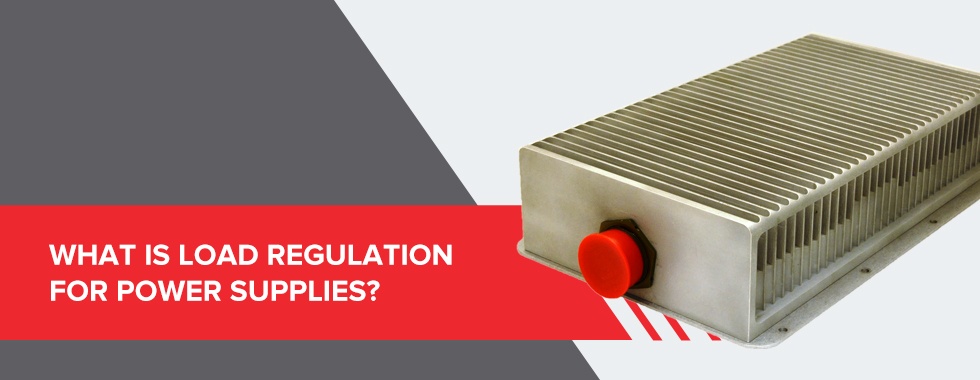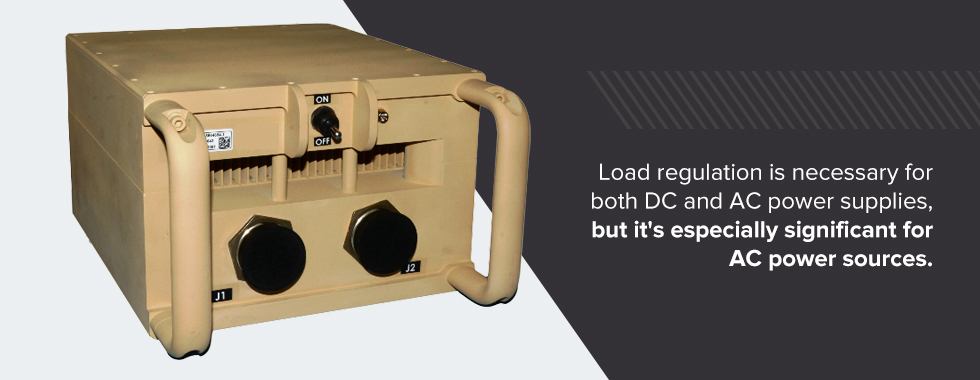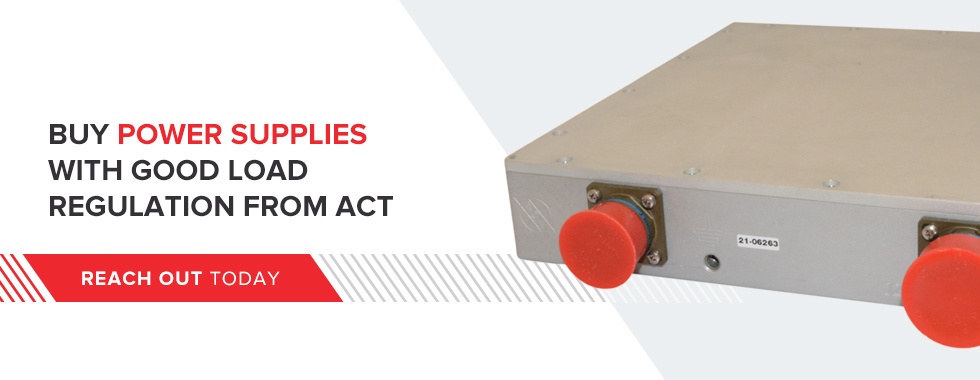
Load regulation is a critical part of keeping equipment and devices safe during operation. It protects them from fluctuations in voltage and ensures that inconsistent loads won’t damage or affect performance. A steady power source is often essential for dependable, ongoing operation, a necessity in many high-stakes applications like military and health care settings.
We’ll demystify load regulation by explaining what it is, how it works, and how you can measure it.
Quick Navigation
- What Is Load Regulation?
- The Importance of Load Regulation in Power Supply Design
- How to Measure Load Regulation in DC Power Supplies
- Load Regulation vs. Line Regulation
- Buy Power Supplies With Good Load Regulation From ACT
What Is Load Regulation?
Load regulation allows a power supply to maintain a constant voltage, regardless of any variations in the output load. Many changes can affect the output load, like a change in resistance, so a power supply needs to ensure a constant, dependable output. It is necessary for providing reliable power to equipment.
Some of the components involved in the load regulation commonly include an output amplifier, a sense circuit, and an error amplifier. Here’s how they might achieve load regulation in a power supply:
- Output amplifier: The output amplifier first receives the input signal and applies a fixed gain, creating an AC sine wave with a high voltage.
- Sense circuit: Next, the sense circuit detects the output voltage from the amplifier and creates a voltage level to compare to a reference voltage at the input of an error amplifier.
- Error amplifier: Lastly, the error amplifier detects the output voltage level and compares it to the input reference. It then adjusts the output until the error signal reaches zero.
Once the signal is regulated, it allows the power supply to maintain a constant voltage for the powered device.
Another option is to use a Zener diode, which maintains a constant voltage with the help of integrated circuits and a negative feedback design.
How Is Load Regulation Calculated?
Usually, load regulation is measured as a percentage of the maximum load condition. This number indicates how much the output of the power supply will vary. Ideally, this number would be zero. That isn’t achievable in the real world, but you should aim to keep load regulation as close to zero as possible. Good load regulation can typically keep the variability under 5%.
The calculation for load regulation is:
- (Vmin-load)-(Vmax-load)/(Vnom-load)
Vmin-load and Vmax-load refer to the voltages at minimum and maximum loads, respectively. Vnom-load is the nominal voltage or the specified output voltage.
The Importance of Load Regulation in Power Supply Design

Load regulation is necessary for both DC and AC power supplies, but it’s especially significant for AC power sources. In these supplies, load regulation is heavily influenced by the output frequency. Without load regulation, both types of power supplies can damage connected equipment through power spikes and drops.
If the electrical load decreases, the output voltage surges and vice versa. These fluctuations can damage components and circuitry or affect how the device works. For example, a drop in output voltage can result in equipment not receiving a high enough voltage for its intended operation. It may shut down altogether or operate poorly.
Good load regulation ensures that the power supply delivers the voltage necessary for proper operation of equipment and keeps it stable throughout the system.
When buying power supplies, you’ll need to pay attention to the load regulation specifications in your product’s documentation. It should specify a load regulation percentage and a load range for which the percentage is appropriate. Your power supply needs to provide power within that specified load current range. If it does not, you could risk improper load regulation and damage to the device. Here are a few examples of power supplies with these specs:
How to Measure Load Regulation in DC Power Supplies
Load regulation is typically measured with resistors or programmable loads. You can test regulation on a new power supply to ensure it works as advertised and matches the specifications provided. Of course, it’s also useful for troubleshooting and repairs.
Resistors
Perhaps the simplest way to measure a system’s load regulation is to use load resistors. The resistors should be selected to draw a minimum load current, a maximum current, and nominal load current — typically half the maximum current — from the power supply. By connecting these to the power supply’s output terminals, you can measure the output voltage and calculate the load regulation.
Programmable Loads
Programmable loads, also called electronic loads, measure load regulation across the entire output range of the power supply. They help ensure that the load can handle the power supply’s full output power. They also help you gauge the power supply’s response to other types of load conditions.
Load Regulation vs. Line Regulation
Load regulation is similar to line regulation. Both measure how well a power supply maintains a steady output voltage, but they differ in what factor is being changed. When calculating load regulation, we assume a constant input voltage. That doesn’t always happen. If the input voltage changes, it could affect the output voltage of the power supply. Line regulation reflects how the power supply responds to that condition.
We can define the two terms as:
- Line regulation: Line regulation refers to a power supply’s ability to maintain output voltage regardless of changes to the input voltage. The output current stays consistent. Line regulation is expressed as a percentage in the equation:
- (Vout low line – Vout high line) / Vout nominal x 100%
- Load regulation: Load regulation is the power supply’s ability to maintain consistent output voltage despite changes in the output load. It applies to light loads or loads near the maximum current.
Buy Power Supplies With Good Load Regulation From ACT
Make sure your equipment and devices aren’t at risk from a power supply with poor load regulation. At Advanced Conversion Technology, we offer a wide variety of high-quality power supplies and have a knowledgeable team to help you find the right one for your application. We have AC-DC and DC-DC power supplies, as well as custom capabilities to help you meet specific demands. As for our quality, we’re a trusted supplier for the defense industry and abide by strict quality standards and certifications.
Reach out to us today for more information on load regulation in power supplies or to request a quote.
